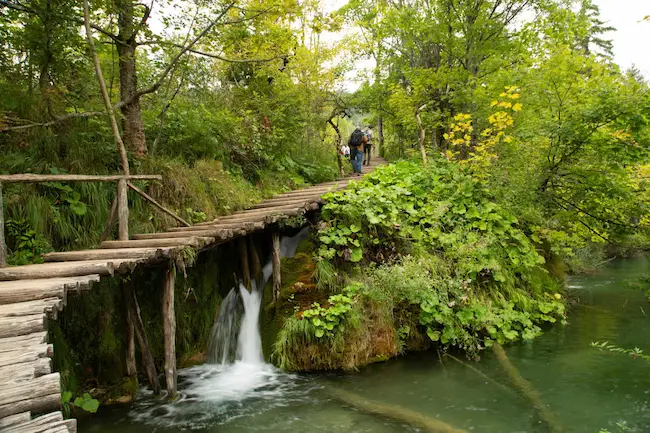The discovery of the Trails Carolina death list has sent shockwaves through the outdoor community. A chilling revelation has surfaced along the once-idyllic trails of North and South Carolina: a mysterious record containing names of individuals who have met untimely ends while exploring these picturesque landscapes. This haunting revelation shattered the essence of tranquility that drew people to these trails.
While this death list’s exact origins and veracity remain mysterious. It underscores the potential dangers lurking amidst nature’s beauty.

Understanding the Carolina Death List
The Carolina death list refers to the unfortunate incidents where participants of the Trails Carolina program lost their lives. Each case on this list represents a family’s tragedy and raises concerns about the safety protocols of wilderness therapy programs. While details of each incident vary, the common thread is the unforeseen risks in such settings. This segment delves deeper into the specifics of each incident, shedding light on the circumstances that led to these tragedies.
Tragic Death of Alec Lansing
Alec Lansing, a 17-year-old camper at Trails Carolina, tragically disappeared and subsequently died on November 10, 2014.The tragic death of Alec Lansing while attending Trails Carolina a wilderness therapy program cast a spotlight on the safety and oversight of such institutions. Alec’s untimely passing added a grievous chapter to the Trails Carolina death list, raising critical questions about the practices and policies of wilderness therapy programs.
Alec Lansing’s Story
Alec Lansing was a teenager who like many others faced personal challenges and was enrolled in Trails Carolina for therapeutic guidance. However his journey took a tragic turn culminating in his death. This section delves into Alec’s background, reasons for joining Trails Carolina, and the circumstances leading to his unfortunate demise.
William Edward Lee’s Tragic End at Trails Carolina
William Edward Lee, a 15-year-old participant at Trails Carolina, tragically lost his life during a wilderness expedition. However, a series of unforeseen events during a hiking activity led to his untimely demise. The investigation into William’s death focused on the adequacy of Trails Carolina’s emergency response protocols and the preparedness of the staff to handle crises in remote environments.
The Loss of Lan August
Ian August, just 14 years old, was another young life lost under the care of Trails Carolina. His death occurred during a group therapy session near a water body. Ian, who was at Trails Carolina to cope with social anxiety, drowned in an accident that raised questions about the supervision and safety measures in place during activities near water. Ian’s case added to the growing Trails Carolina death list, sparking debates about the risk management practices of wilderness therapy programs, especially concerning water-based activities.
The Case of Charles Moody
The death of Charles Moody, a 17-year-old at Trails Carolina, added another heartbreaking story to the Trails Carolina death list. Charles’s death was the result of a health-related issue that escalated while he was in the program. Charles’s passing highlighted the need for comprehensive health screening and on-site medical support in wilderness therapy programs.
The Investigation into Alec Lansing’s Death
Following Alec’s death, an extensive investigation launched to uncover the details of the incident. This investigation scrutinized the program’s safety protocols, staff qualifications, and the specific actions taken during the emergency. The findings of this investigation shed light on potential lapses in safety and care at Trails Carolina.
More Read..
Work Camping Belize: A Unique Adventure Awaits
Impact on the Trails Carolina Death List
Alec Lansing’s death added a solemn note to the existing Trails Carolina death list. His case became a focal point for critics and advocates for reform in wilderness therapy. This part of the article discusses how Alec’s death intensified scrutiny on Trails Carolina and similar programs, catalyzing calls for change.
Family’s Response and Advocacy
The Lansing family’s response to Alec’s death was one of profound grief and a determined quest for justice and reform. Their advocacy efforts highlighted the need for stricter regulations and transparency in wilderness therapy programs. This section covers the family’s journey from mourning to activism.
Regulatory and Community Reaction
The news of Alec Lansing’s death and its addition to the Trails Carolina death list prompted a strong response from regulatory bodies and the community. This segment examines the subsequent actions taken by state and federal agencies and reactions from the public and other families involved in wilderness therapy programs.
Reforms and Changes Post-Alec Lansing’s Death
Alec Lansing, a 17-year-old camper at Trails Carolina, tragically disappeared and subsequently died on November 10, 2014. His death added a sad chapter to the Trails Carolina death list and raised serious concerns about the safety protocols and oversight of wilderness therapy programs. In the wake of Alec Lansing’s death, Trails Carolina and other wilderness therapy programs faced pressure to reform. This section discusses the changes implemented in response to Alec’s death, including enhanced safety measures, staff training improvements, and policy revisions aimed at preventing future tragedies.
The Impact of Trails Carolina Death List on Families
For families affected by the Carolina death list, the Loss is immeasurable. Beyond the immediate grief, these incidents have sparked a broader discussion about the oversight of youth therapy programs. Testimonies from these families highlight the need for stringent safety measures and transparency in such programs. The emotional and psychological impact on these families is explored, along with their advocacy for change in the wake of their losses.
More Read..
Red Mountain Uzbekistan: Discovery of Majestic Wonders
Investigations
Investigations into the death list have brought to light various factors contributing to these tragedies. Authorities have examined program policies, staff qualifications, and emergency response protocols. These investigations aim not only to find accountability but also to prevent future incidents. This section covers the findings of these investigations, the challenges faced, and the recommendations made by investigators.
Regulatory Response
Regulatory bodies have begun re-evaluating policies governing wilderness therapy programs. It includes reviewing licensing requirements staff training standards and participant safety measures. The goal is to ensure that such programs operate safely and ethically. This part discusses the specific changes proposed or implemented by regulatory bodies and the impact these changes have had on the industry.
Community Reaction
The community’s reaction to the Trails Carolina death list has been one of concern and call for action. Parents, educators, and mental health professionals are demanding more stringent oversight. This collective voice is crucial in driving policy changes and ensuring the safety of all participants in such programs. The section highlights various community responses, including advocacy groups, public forums, and social media campaigns.
Safety Measures and Trails Carolina
Post the Trails Carolina death list, the focus on safety measures has intensified. Like other similar programs, Trails Carolina is now under scrutiny to ensure that it adopts best practices in safety and care. It includes risk assessments, staff training, and emergency protocols. This shift is crucial in restoring trust among families considering such programs for their loved ones. This segment details the safety measures implemented and their effectiveness in preventing future incidents.
Advancements in Wilderness Therapy Post
Following the Trails Carolina death list, there have been significant advancements in wilderness therapy. The industry is evolving, incorporating more rigorous safety standards and therapeutic approaches backed by scientific research. This evolution is a direct response to past incidents, aiming to enhance the effectiveness of the therapy while safeguarding the participants. These advancements are technical and philosophical, with a greater emphasis on individualized care and ethical practices. This part elaborates on the new technologies, methodologies, and ethical standards introduced into wilderness therapy.
Conclusion
The Trails Carolina death list has been a wake-up call for wilderness therapy programs. The future of Trails Carolina and similar programs hinges on their ability to adapt and prioritize participant well-being. This tragic list has sparked a conversation about balancing therapeutic intervention and participant safety. As the field moves forward, the lessons learned will likely lead to more positive outcomes for all involved in wilderness therapy. This concluding section reflects on the potential future of wilderness therapy, emphasizing the importance of learning from past incidents to create a safer and more effective therapeutic environment.
FAQs
What is the Trails Carolina death list?
The Trails Carolina death list refers to the reported fatalities of participants in the Trails Carolina wilderness therapy program.
Who was Alec Lansing?
Alec Lansing was a 17-year-old who tragically died while participating in Trails Carolina.
What common issues are highlighted by the Trails Carolina death list?
The list highlights concerns about safety protocols, staff qualifications, and emergency response in wilderness therapy.
How did Trails Carolina respond to these incidents?
Trails Carolina reportedly reviewed and updated its safety measures, staff training, and operational policies.
What impact did these deaths have on wilderness therapy programs?
These deaths sparked a broader debate on the safety and regulation of wilderness therapy programs, leading to calls for reform and stricter oversight.


